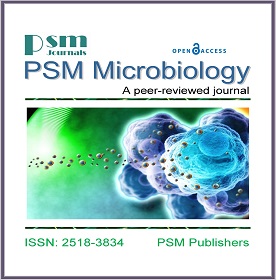Mycoflora of Well Water in the Dairy Farms of the Town of Hatillo Puerto Rico
Keywords:
Filamentous fungi, yeasts, aquifers, water, dairy farmsAbstract
Water wells are one of the main sources of supply of this resource in dairy farms. In P.R. these waters are used in the dairy farms, but when there is an atmospheric phenomenon such as a hurricane, people consume it, because there is no electrical service. Organisms that have a low content of nutrients live in these waters. But with agricultural activities and anthropogenic contamination, they are the main factors of contamination of aquifers. The objective of this study is to make an inventory of filamentous fungi and yeasts in 3 dairy farms water wells. Monthly samples were taken for a whole year. The membrane filtration method was used. The culture media used were RBA, SDA and PDA in triplicate. The isolates were identified using morphological and microscopic characteristics and for yeasts the RapID Yeast Plus TM test was used. All the wells presented contamination by fungal growth. The water well with the highest growth was well A. The months with the highest growth of colonies found were December and January. Seven genus and 18 species of fungi and yeasts were isolated. The genus found were Aspergillus, Rhizopus, Candida, Penicillium, Curvularia, Trichosporon and Neoscytalidium. The species found were: A. nidulans, A. oryzae, A. terreus, A. niger, A. flavus, A. ochraceus, A. tamarii, A. ustus, R. stolonifer, C. tropicalis, C. rugosa, C. parapsilosis, C. rugosa, C. purpurogenum, P. chrysogenum, P. expansum, Curvularia hominis, and T. beigelii. The temperature was 22.1 °C to 29.6 °C, while the pH was 7.62 to 8.66. The presence of fungi may indicate that there is contamination of anthropogenic origin in the water wells, of each dairy farm. Many of these fungal species are associated with various infections in humans and animals. We can point out the importance of disinfection in those water wells that will be used as drinking water by humans and animals.
Downloads
Published
How to Cite
Issue
Section
License
Copyright (c) 2023 PSM

This work is licensed under a Creative Commons Attribution-NonCommercial 4.0 International License.




